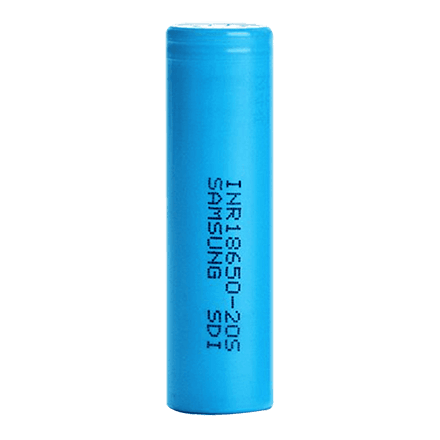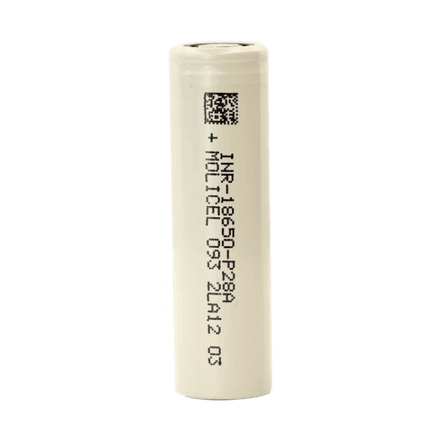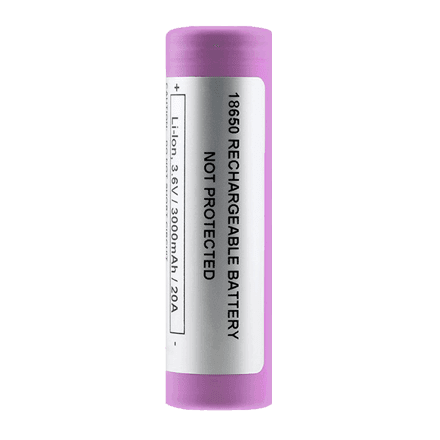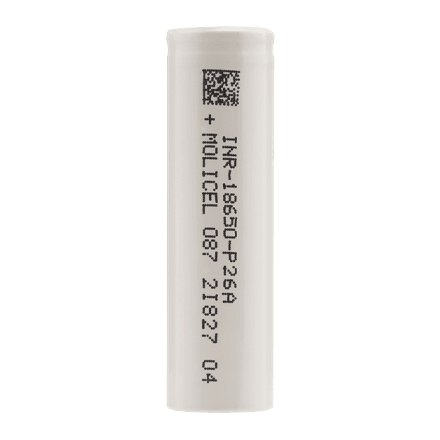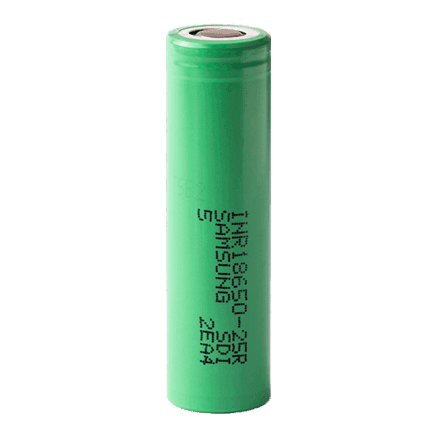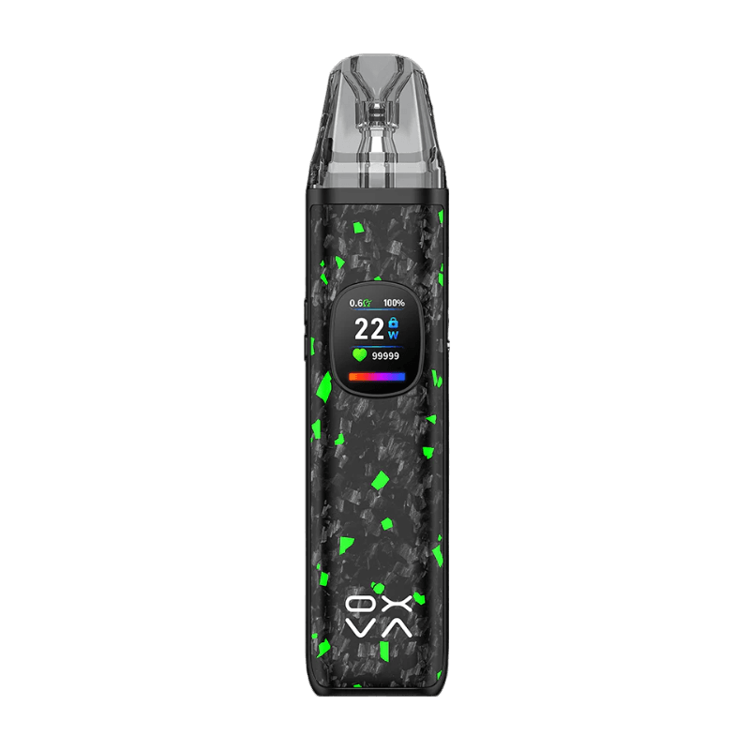
Samsung have advised against using their batteries in vape products.
The 18650 is the most common battery in vaping. These are the most readily available, reliable, extensively tested, and the most used batteries in vape mods. While newer batteries, such as 20700 and 21700, have raised the stakes, we rarely see them in dual or triple-battery vape mods due to their larger size. Manufacturers still lean on 18650 as they combine a smaller size with tried and tested performance.
Due to the large availability of 18650s from electronics manufacturers, this list does not contain any rewrapped batteries. But it is not rare for 18650s to be counterfeited, so always do your research and only buy batteries from reputable vendors.
How we picked the batteries
Choosing “best batteries” is not something to pick simply based on subjective likes. While our international team of experts and vape enthusiasts use the batteries on our lists, our recommendations and product selection could not have taken place without first going over the data offered by Battery Mooch.
Battery Mooch (or just Mooch) is the vape community’s expert tester of batteries. For a few years now, he’s been supplying the community with in-depth and reliable testing for the majority of batteries used in vaping.
This is not his list of best batteries, though all these batteries have been verified by his battery charts to be worthy of inclusion. Mooch and his highly detailed research can be found on his E-cigarette Forum blog, his channel on YouTube, and his recommendations on Reddit.
18650 ratings and specifications
Continuous Discharge Rating (CDR)
This is the rating that is used by reputable electronic manufacturers, and the one rating that we can use to compare battery discharge. When accurately rated, it signifies the current that a battery can be safely discharged at a continuous rate without taking damage or reducing its capacity.
Rewraps and Chinese-manufactured batteries will often overstate the CDR or use other ratings instead of it. One good example is the maximum discharge rating (or maximum discharge current), which may even be the only rating on the wrap. It is the maximum current that a battery can supply in short intervals (that are most of the times not mentioned on the rating). This is not a rating that should be taken into account when considering a battery, as it is often times misleading. Always look for the CDR of a battery, and cross-check ratings with online sources.
Capacity
Calculated in mAh (milliampere-hours), the capacity of a battery signifies its running time. One mAh is equal to the charge transferred by a steady current of one milliampere flowing for one hour. While this rating is sometimes overstated on battery wraps, this doesn’t happen as often as it does with discharge ratings.
Going over the ratings of reputable manufacturers, you will notice a pattern: there is always a trade-off between CDR and capacity. There is (still) no 18650 with a CDR over 30 amps. At the same time, no 18650 with a capacity at or over 3000 mAh will have a CDR over 20 amps. Until further notice, any battery that is not rated according to these two rules can be assumed to be falsely rated.
Try to avoid rewraps, as the batteries that are used for them may change at any given time. With 18650s being so readily available, finding a battery from a reputable manufacturer should always be a priority.
Other devices powered by 18650s
18650s are commonly used in devices like:
- Laptops
- Cordless power tools
- Electronic vehicles
- LED flashlights
- Power banks
The Tesla Roadster, the first production automobile to use rechargeable lithium-ion batteries, was powered by 18650s, as were the company’s Models X and S. Granted, there were thousands used for the electric vehicles' battery packs, but they were still 18650s nonetheless.
The Freemax REXA PRO and REXA SMART are highly advanced pod vapes, offering seemingly endless features, beautiful touchscreens, and new DUOMAX pods.
The OXVA XLIM Pro 2 DNA is powered by a custom-made Evolv DNA chipset, offering a Replay function and dry hit protection. Read our review to find out more.
The SKE Bar is a 2 mL replaceable pod vape with a 500 mAh battery, a 1.2-ohm mesh coil, and 35 flavors to choose from in 2% nicotine.
Because of declining cigarette sales, state governments in the U.S. and countries around the world are looking to vapor products as a new source of tax revenue.
The legal age to buy e-cigarettes and other vaping products varies around the world. The United States recently changed the legal minimum sales age to 21.
A list of vaping product flavor bans and online sales bans in the United States, and sales and possession bans in other countries.
Find Your Perfect Product
Navigate our vape database precisely by customizing your filters. Find products tailored to your needs with options like price, category, and more.
Sort by:
Empowering Vapers Worldwide
As a recognized authority in the vaping world, Vaping360 draws over a million monthly visitors to read our in-depth reviews and guides, breaking news, and insights on the latest vaping products and events impacting the vaping world. Our mission is to achieve a healthier, smoke-free world.
